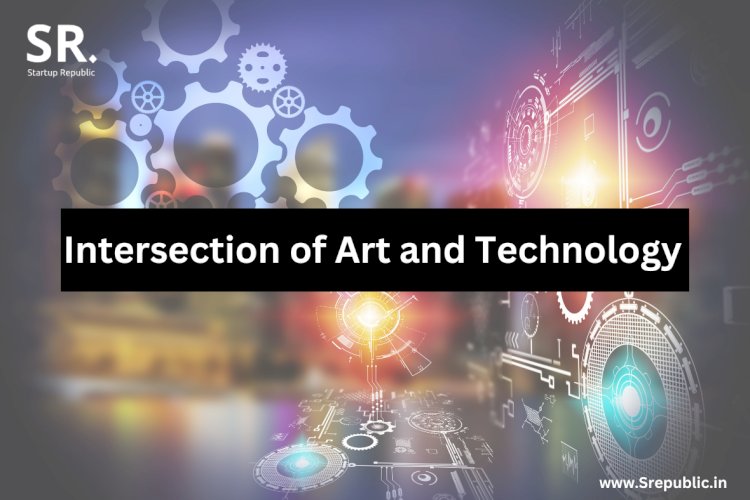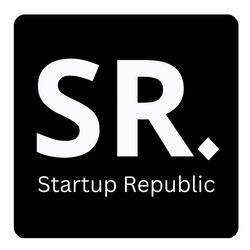The Intersection of Art and Technology in the Startup Ecosystem

Art and technology may seem like two separate and unrelated worlds, but they intersect in many fascinating and innovative ways, especially in the startup ecosystem. Entrepreneurs are increasingly leveraging technology to create new forms of art, enhance traditional art forms, and bridge the gap between art and audience. This blog will explore how art and technology intersect in the startup ecosystem and the benefits and challenges of this convergence.
Enhancing Traditional Art Forms with Technology
One of the most apparent intersections of art and technology in the startup ecosystem is the use of technology to enhance traditional art forms. For instance, virtual reality (VR) and augmented reality (AR) have revolutionized the way people experience visual arts, such as paintings, sculptures, and installations. Through VR and AR, people can immerse themselves in a virtual world and interact with art in new and exciting ways.
Similarly, technology has enabled musicians, dancers, and performers to experiment with new techniques, sounds, and visual effects. For example, digital music software such as Ableton Live and Logic Pro allow musicians to create and produce music in ways that were previously impossible. Dancers and performers can use motion tracking and projection mapping to create captivating visual effects that augment their performances.
Creating New Forms of Art with Technology
Another exciting intersection of art and technology in the startup ecosystem is the creation of entirely new art forms. For instance, generative art is a form of art that relies on algorithms, code, and machine learning to create unique and evolving artworks. Artists can use generative art to explore new concepts, aesthetics, and styles that are impossible to achieve with traditional techniques.
Another emerging art form is digital art, which encompasses various forms of art that are created or displayed digitally, such as video art, net art, and interactive installations. Digital art blurs the boundaries between art and technology, and allows artists to create immersive and interactive experiences that engage audiences in new and exciting ways.
Bridging the Gap between Art and Audience
Art and technology also intersect in the startup ecosystem through the creation of platforms and tools that facilitate access to art and connect artists with audiences. For instance, online art marketplaces such as Artsy, Saatchi Art, and Artfinder enable artists to showcase and sell their artworks to a global audience. These platforms provide artists with exposure, sales, and networking opportunities that were previously inaccessible.
Similarly, social media platforms such as Instagram, TikTok, and YouTube have democratized the creation and distribution of art, enabling artists to reach and engage with audiences directly. Artists can use these platforms to showcase their work, build their brand, and connect with fans and supporters.
Benefits and Challenges of the Intersection of Art and Technology
The intersection of art and technology in the startup ecosystem has many benefits, such as:
-
Innovation: The convergence of art and technology enables entrepreneurs and artists to experiment with new forms, styles, and techniques that push the boundaries of what is possible.
-
Access: Technology has democratized access to art, enabling artists to reach and engage with audiences globally, and audiences to experience art in new and immersive ways.
-
Sustainability: Art and technology startups can have a positive impact on the environment and society by promoting sustainable practices, such as using renewable energy, reducing waste, and supporting social causes.
However, the intersection of art and technology also presents some challenges, such as:
-
Technical complexity: Creating and developing art and technology startups require technical skills, resources, and expertise that may be challenging to acquire or manage.
-
Copyright and ownership: The use of technology in art raises issues of copyright, ownership, and intellectual property, which can be complex and controversial.
-
Audience reception: The integration of technology into art may not appeal to all audiences or may be perceived as a threat to traditional art forms and practices.
Conclusion
The intersection of art and technology in the startup ecosystem is a fascinating and promising field that opens up new opportunities for creativity, innovation, and engagement. By leveraging technology to enhance traditional art forms, create new art forms, and bridge the gap between art and audience, startups can contribute to the cultural and economic vitality of society. However, to succeed in this field, startups need to navigate the technical, legal, and social challenges that arise from the intersection of art and technology, and balance innovation with accessibility, sustainability, and respect for tradition. Ultimately, the convergence of art and technology in the startup ecosystem represents a unique and dynamic field that combines imagination, expertise, and entrepreneurship, and has the potential to shape the future of art and culture for generations to come.

 Lalita Singh
Lalita Singh 





















